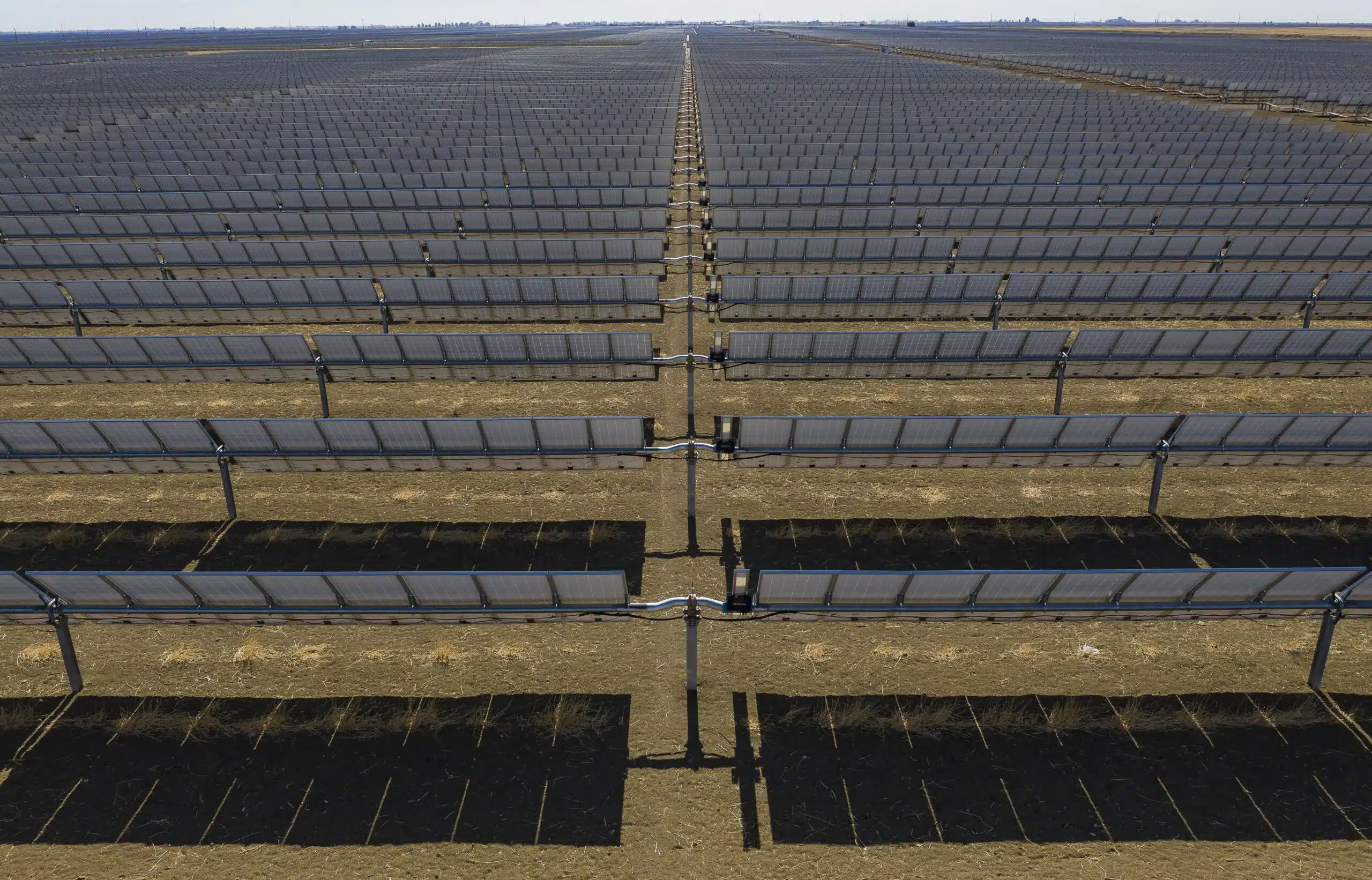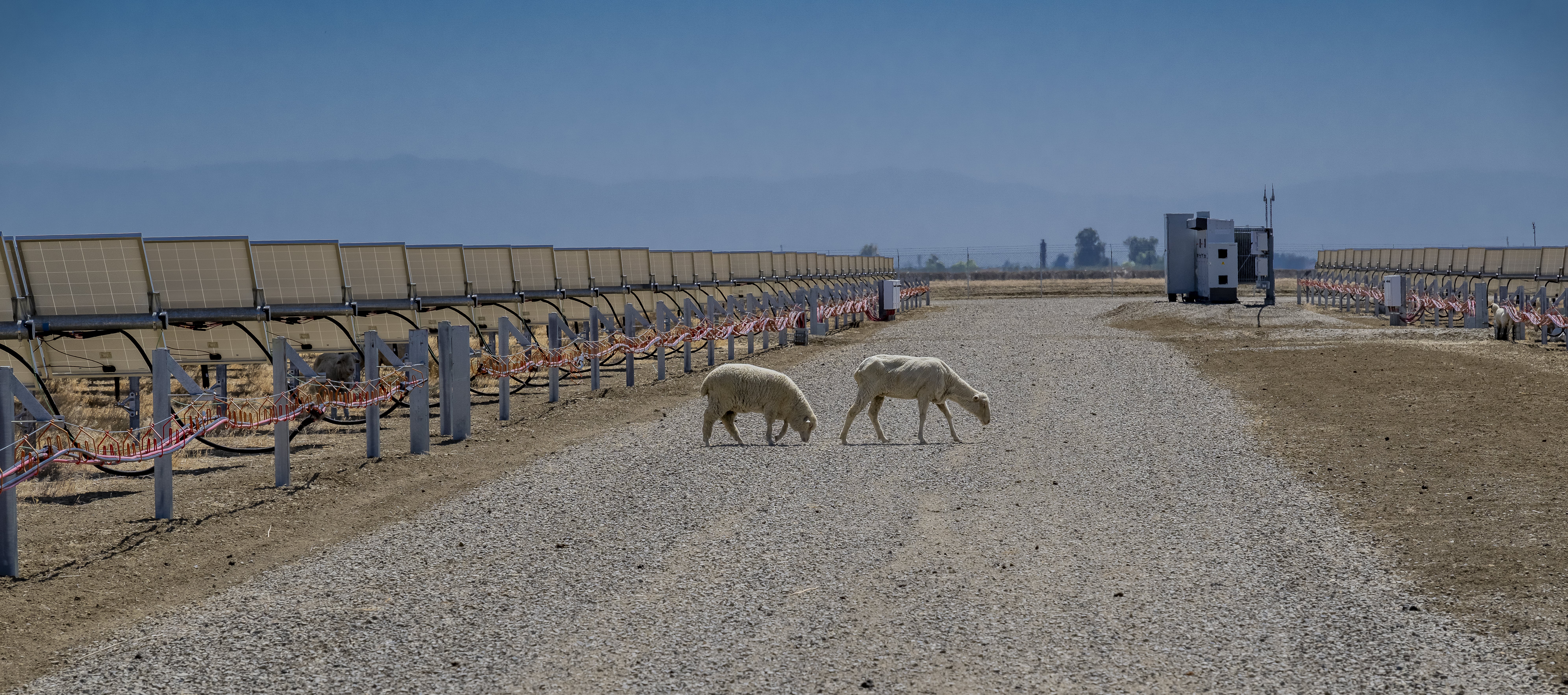- October 16, 2024
- Perspectives, Trending Topics
Managing Stormwater at Utility-Scale Solar Sites


Amanda Miller
Environmental Scientist

Erik Strock, PE
Civil Engineer
Clean energy projects are booming globally. In the US, during the first three months of 2024 alone, solar projects made up approximately 82% of the 5,585 megawatts (MW) added in the utility-scale storage, wind, and solar markets. As solar continues to become a leading power generation source, a key consideration for developers is stormwater management at utility-scale solar sites. By understanding stormwater management throughout project stages, stakeholders can partner with clean energy consultants to create a plan that supports a site’s success.
Phase 1: Solar Site Selection & Development
Utility-scale solar sites require a unique approach to stormwater management due to their size, geographic position, earthwork needs, and Authority Having Jurisdiction (AHJ) standards. Given the specific requirements of solar design, developers should expand their considerations when selecting a site. Some site elements to consider are as follows:
Soil type, compaction, and topsoil depth
Vegetation type and density
Site disturbance required for photovoltaics (PV)
Rainfall and runoff
Known reclamation or decommissioning requirements
One way to address some of these elements is to apply the Environmental Protection Agency’s Integrated Vegetation Management approach, which identifies cost-effective, efficient methods to manage plants on site. Part of this approach may include a topsoil assessment, vegetation survey, or other studies to help stakeholders better understand site conditions before they add solar infrastructure.
At this early stage, developers should assess PV infrastructure design, including piles, module racking systems, earthwork, and necessary site disturbance. To minimize environmental impacts, it should be a priority in assessment and early-stage design to establish plans for vegetation and erosion control during construction, reclamation, and maintenance.
Phase 2: Engineering Design
Utility-scale solar sites often aren’t modeled well through standard stormwater runoff design tools and AHJ design codes. Therefore, unique stormwater management strategies need to be applied by qualified design experts. These sites usually require more than just meeting minimum code standards; project owners should hire an experienced engineering team for proper stormwater analysis and two-dimensional hydrologic modeling.

Alongside effective stormwater modeling, site engineers should adhere to the following erosion control guidelines in their designs:
- Increase the row-to-row spacing of solar panel racking—wider spacing helps encourage sheet flow of water falling from panels.
- Minimize grading and disturbance to the maximum extent possible by evaluating and using terrain following single-axis trackers.
- Model internal-to-the-site stormwater velocities and leverage best management practices (BMPs).
- Guard vulnerable areas external to the PV site like regulated wetlands, roadways, and residential spaces and design for stormwater management that keeps flow away from these areas.
- In vegetation design, prioritize low-growing native plants, invasive/noxious weed management, and topsoil preservation (which supports natural stormwater management).
Following these best practices during the design stage helps set the construction and operation teams up for future success with stormwater management.
Phase 3: Construction
The construction crew should be careful to reduce negative site impacts by closely adhering to design and planning recommendations. Some recommendations include exclusively using specified site access roads rather than compacting the ground by driving construction vehicles off-road. Teams should also strip, preserve, and then restore the site’s natural topsoil to maintain existing seedbeds and support future native plant growth and long-term erosion control.
Another way to support stormwater management during the construction phase is the implementation and maintenance of BMPs. It is essential to set aside appropriate budget before the construction stage to institute BMPs and implement a communication plan that the owner, engineer, vegetation specialist, and contractor can all use. The communication plan can capture how decisions should be made about maintenance, seed mixes, weed management, amendment selection, and planting timelines.
Phase 4: Operation
After the site is operational, owners should set up permanent stormwater controls (as needed) and vegetation maintenance. Temporary stormwater mitigation measures should be continued until permanent controls are in place to reduce erosion in between construction and site restoration. A Stormwater Pollution Prevention Plan and Vegetation Maintenance and Reclamation Plan can help inform which species should be encouraged, how appropriate levels of vegetation growth should be maintained, and how noxious weeds and pests can be managed. Most stormwater permits require that 70% of the vegetation cover should be restored at utility-scale solar sites, and adaptive management can help stakeholders align with standards even as the site evolves over time.
To set up a utility-scale solar site for stormwater success, stakeholders should integrate modeling and design for erosion mitigation, revegetation planning, topsoil preservation, and maintenance of best management practices throughout the life of the project. With a multidisciplinary team of solar and stormwater management experts, owners can help future-proof their sites against erosion and surface runoff.
About the Experts

Amanda Miller
Amanda has more than 16 years of experience as a project manager and subject matter expert supporting energy developments throughout the continental United States. As a biologist and permit specialist, she has extensive experience coordinating with local, state, and federal authorities to gain necessary environmental permits for regulatory compliance. With a history of technical consulting experience on complex renewable and power delivery projects, Amanda has a portfolio of creative solutions to offer clients.

Erik Strock, PE
Erik has 12 years of civil engineering experience in design and project management. His experience encompasses engineering design, developing master plans, project stakeholder coordination, and quality assurance efforts. His technical skills include working on projects such as roadway, asset management evaluation and design, drainage, structures, and hydrology.
